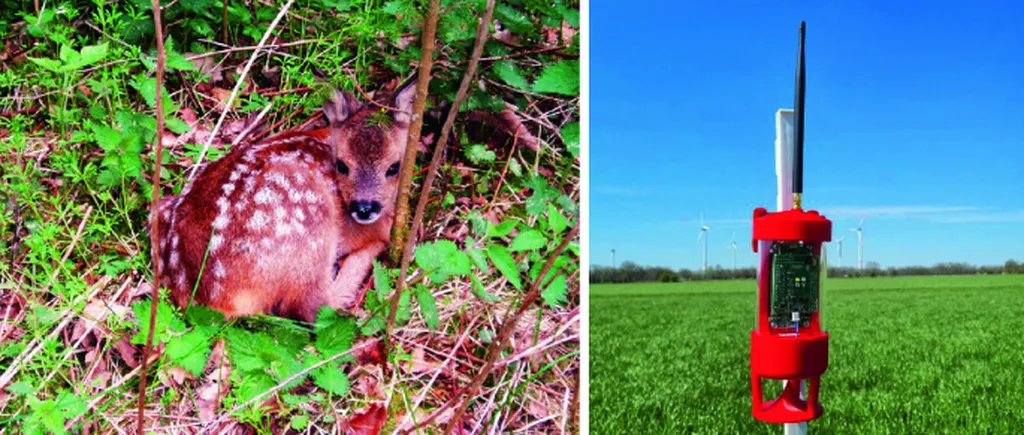In the heart of Germany’s agricultural landscapes, a silent crisis unfolds each mowing season. Roe deer fawns, with their instinct to lie low and hide, often become unwitting victims of mowing machinery. This grim reality has prompted researchers, led by Ferdinand Paul Stehr of the Wildlife Biology and Wildlife Management Unit at the Technical University of Munich, to explore innovative solutions to mitigate this preventable tragedy.
Stehr and his team have turned their attention to visual-acoustic wildlife deterrents, devices designed to scare fawns away from agriculturally used areas before the mowing begins. Their findings, published in the journal *Ecological Solutions and Evidence* (translated from German as *Ecological Solutions and Evidence*), offer a glimmer of hope, but also underscore the complexity of the challenge.
The study, which tracked the movements of 76 GPS-collared fawns between 2022 and 2023, revealed that these deterrents can indeed influence fawn behavior. “We found that 36% of the fawns left the trial area and did not return at all during the trial period,” Stehr explained. “This suggests that the deterrents are having an effect, but it also means that a substantial number of fawns remain at risk.”
Among the devices tested, electronic acoustic deterrents, particularly smoke detectors, emerged as the most effective. They scared away over 50% of the fawns without any significant habituation effect. However, the researchers also discovered that the effectiveness of these deterrents was influenced by several factors, including the fawns’ age, proximity to forest edges, vegetation height, and field size.
Younger fawns, following a ‘hider’ strategy, were less likely to leave the agriculturally used areas, while older fawns exhibited higher mobility. Fawns were also more likely to remain in areas with tall vegetation and large field sizes. Conversely, deterrents proved more effective in smaller fields and near forest edges.
The commercial implications of this research are significant, particularly for the energy sector. As the push for renewable energy sources continues, the demand for agriculturally used land is expected to increase. This, in turn, could exacerbate the problem of mowing-related mortality among roe deer fawns. By investing in and implementing effective deterrent strategies, energy companies can help mitigate this risk, thereby enhancing their corporate social responsibility profiles and potentially avoiding costly legal battles.
Moreover, this research could shape future developments in wildlife management practices. As Stehr noted, “Our findings provide critical insights for improving wildlife management practices in agricultural landscapes.” By understanding the factors that influence fawn behavior, researchers and wildlife managers can develop more targeted and effective strategies to protect these vulnerable animals.
However, the study also highlights the need for additional measures. As Stehr pointed out, “Despite some success, the limited efficacy of the tested deterrent devices underscores the necessity for additional measures, such as using drones equipped with thermal imaging cameras, to further reduce fawn mortality during mowing.”
In the end, the battle to protect roe deer fawns from mowing-related mortality is far from over. But with continued research and innovation, there is hope that we can turn the tide and ensure a safer future for these iconic creatures.

